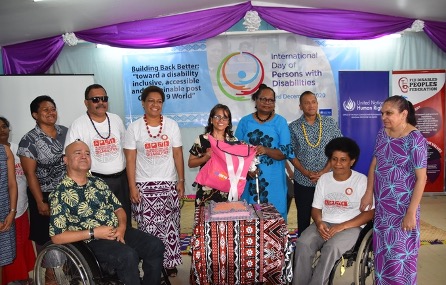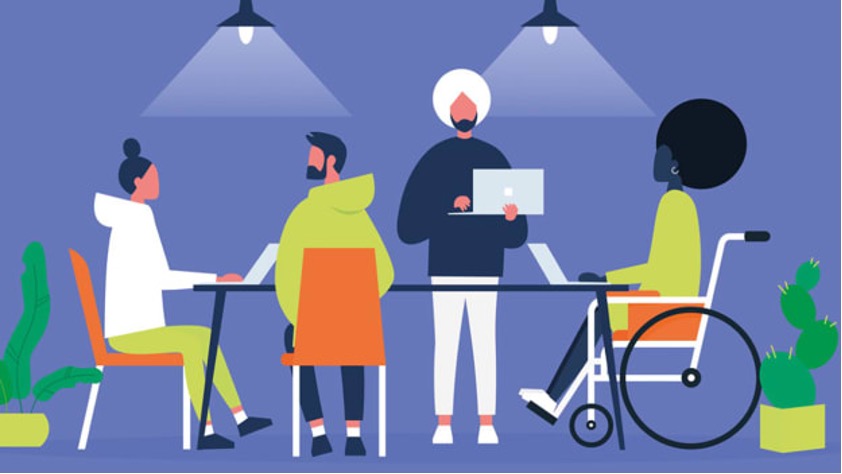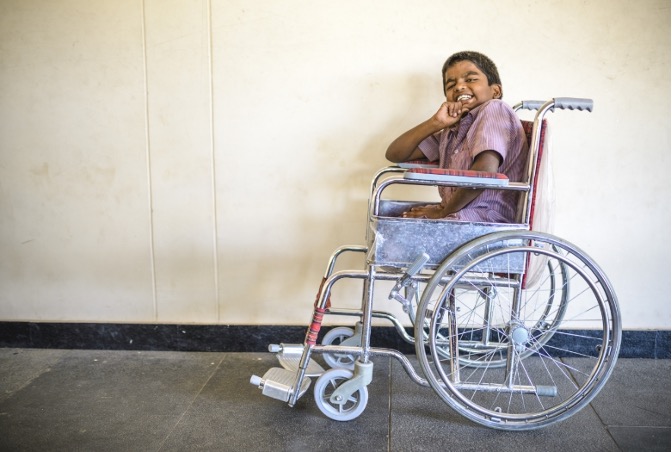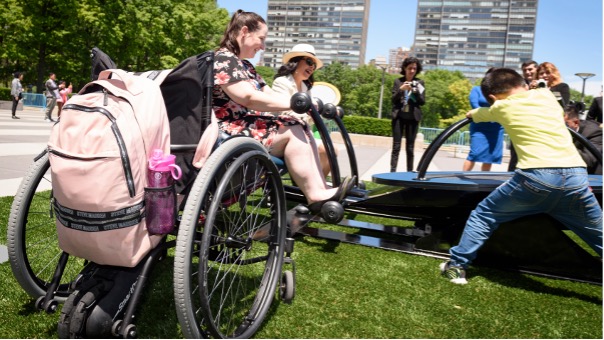What can be considered as the worst feeling in this world? Is it failed relationships? Or living far away from your parents? People don’t realise and appreciate the little things to which they have the easiest access in life. If you go out and ask random strangers, what do they want the most in their lives, they’ll simply answer that they want wealth, education, or maybe fancy houses.
We all live in a world where we are programmed to prioritise materialistic things as they tend to give us more happiness. One might not be grateful for the things that he has. Humans are some of the most advanced living beings and our body is designed to carry out different tasks with the utmost level of efficiency. Inclusivity can be a sympathetic word; it can often be forced. Humanity is a group who together form up a social community. We’ve often heard this phrase, but nobody mentions the societal, gender, class and economic gaps and differences existing in the current global scenario.
People tend to communicate with each other, only when there’s some sort of social advantage that might be attached in that particular conversation. We generally only feel a sense of belonging to the people we grew up around. This may include family members, relatives, and childhood friends. All the other relationships might just be for our long-term survival. As we grow up, we keep meeting and discarding new people. We choose our social circle to determine the human nature of our interactions.
Most of the time, we meet people with different talents, personalities, and backgrounds. We tend to want to know them more and try to know where they are coming from. There’s one group of humans who interact with each other and then there are people who are attributed as not belonging to the “normal” existing society.

Inclusivity is the cornerstone of a progressive society, signifying acceptance, understanding, and more equal opportunities for all. In the realm of inclusivity, a significant focus must be directed towards individuals with disabilities. Creating an inclusive environment for people with disabilities is not just a matter of policy; it is a moral obligation, and a testament to the empathy and compassion of a society. Considering we live in a diverse and evolving society, the importance of inclusivity cannot be overstated.
It is not merely a buzzword but a fundamental human right that should be extended to every individual, regardless of their abilities or disabilities. By promoting inclusivity for the disabled, society can break down barriers and foster an environment where everyone can thrive. Inclusivity for the disabled starts with accessibility. Infrastructure, such as buildings, public transportation, and recreational spaces, must be designed with the needs of people with disabilities in mind. Ramps, elevators, and wide doorways ensure mobility for individuals using wheelchairs, while visual and auditory cues cater to those with visual or hearing impairments.
By making these simple adjustments, we can pave the way for a more inclusive society where everyone can participate actively.
One of the fundamental aspects of inclusivity for the disabled is creating physical spaces and infrastructure that cater to diverse needs. Public spaces, transportation systems, educational institutions, and workplaces need to be designed and modified to ensure accessibility for all.
This involves implementing features such as ramps, elevators, wide doorways, and accessible washrooms to enable mobility for individuals using wheelchairs or other mobility aids. Additionally, accessible public transportation is vital in ensuring that people with disabilities can travel independently. Buses and trains equipped with ramps and designated spaces for wheelchairs empower disabled individuals to participate in various activities, including work and social engagements.
Making public spaces universally accessible not only provides convenience but also brings about a sense of belonging and dignity amongst people with disabilities, emphasising the value of their presence in the community.

Education is a powerful tool for empowerment and social integration. Inclusive education refers to the practice of educating students with disabilities alongside their non-disabled peers, tailoring teaching methods and resources to individual learning needs. Inclusive classrooms promote diversity, empathy and understanding among students, preparing them for a more inclusive society.
Educational institutions play a major role in promoting inclusivity. Schools should provide specialised educators, assistive technologies, and accessible learning materials to accommodate diverse learning abilities. Furthermore, teachers need training to understand the unique challenges faced by students with disabilities, enabling them to create an inclusive and supportive learning environment. Inclusive education not only equips disabled individuals with knowledge and skills but also breaks down barriers, fostering social acceptance and integration.
Meaningful employment is not only a source of financial stability but also a crucial component of self-worth and societal contribution. Inclusivity in the workplace involves providing equal employment opportunities and creating an accommodating work environment. Many individuals with disabilities possess valuable skills and talents, and inclusive employment practices can harness this potential.
Employers can promote inclusivity in the workplace by implementing reasonable accommodations such as flexible work hours, accessible workstations, and assistive technologies. Moreover, businesses benefit from diverse perspectives and problem-solving approaches, enhancing innovation and creativity within the workforce. Inclusive employment not only enriches the workplace but also dismantles stereotypes and biases, promoting a culture of acceptance and equality.

Despite progress in inclusivity initiatives, societal stigmas and misconceptions about disabilities persist. Social awareness campaigns are instrumental in challenging stereotypes and promoting understanding. These campaigns can highlight the capabilities and achievements of people with disabilities, debunking myths and fostering a more inclusive mindset. Education and awareness programs should be integrated into school curricula, community events and media campaigns to reach a wide audience. By familiarising society with the challenges faced by disabled individuals, these initiatives cultivate empathy and compassion, encouraging supportive and inclusive behaviours. Moreover, involving disabled individuals in these campaigns as advocates and spokespersons can provide powerful first-hand perspectives, challenging prejudices and fostering acceptance.
In this digital age, technology has emerged as a powerful tool for inclusivity. Various assistive technologies have revolutionised the lives of people with disabilities, enhancing their independence and participation in society. Screen readers, voice recognition software, and specialised apps empower individuals with visual or hearing impairments to access information and communicate effectively. Additionally, advancements in robotics and wearable devices offer innovative solutions to enhance mobility and independence. Prosthetic limbs with advanced sensors and artificial intelligence algorithms enable natural movements, restoring a sense of normalcy and confidence to amputees. Similarly, exoskeletons and mobility aids enhance the mobility of individuals with mobility impairments, allowing them to navigate the world more freely.
Moreover, the internet and social media platforms serve as powerful tools for connecting disabled individuals, providing a sense of community and support. Online forums and social networks enable people with disabilities to share experiences, resources, and advice, fostering a sense of belonging and reducing the sense of isolation that some individuals may feel.

Creating a more inclusive environment for disabled people requires a collective effort that involves societal awareness, accessible infrastructure, and a shift in attitudes.
Firstly, raising awareness is essential. Education campaigns and community initiatives can dispel myths, challenge stereotypes, and promote understanding about various disabilities. By fostering empathy and acceptance, society can create an atmosphere where disabled individuals are seen for their abilities and contributions.
Secondly, building accessible infrastructure is crucial. Public spaces, transport systems, workplaces and educational institutions must be designed or adapted to accommodate diverse needs. When physical barriers are removed, disabled individuals can participate fully in social, educational, and professional activities, fostering a sense of belonging.
Lastly, encouraging an inclusive mindset is crucial. Emphasising diversity and celebrating the achievements of disabled individuals in the media and on public platforms can challenge societal perceptions. Additionally, involving disabled individuals in decision-making processes ensures their voices are heard and respected. Thus, by combining awareness campaigns, accessible infrastructure and positive mindsets, we can create a society where disabled people feel not just included, but valued, respected and empowered to reach their full potential.
Inclusivity for the disabled is not a mere aspiration, it is an achievable goal that requires concerted efforts from governments, communities, and individuals. By creating accessible infrastructure, promoting inclusive education, offering meaningful employment, raising social awareness, and harnessing technological advancements, society can nurture an environment where everyone, regardless of their abilities or disabilities, can thrive. A truly inclusive society celebrates diversity, recognizing the unique strengths and contributions of every individual. It values empathy, compassion, and understanding, fostering an environment where people are judged by their character and abilities rather than their physical or mental limitations. Embracing inclusivity for the disabled is not only a matter of social justice but also a testament to the depth of human empathy and the strength of collective action. As we move forward, let inclusivity be our guiding principle, shaping a world where every person, regardless of their abilities, can lead a life of dignity, fulfilment, and equality.
Written by – Anmol Agarwal
Edited by – Nandini Pillai
